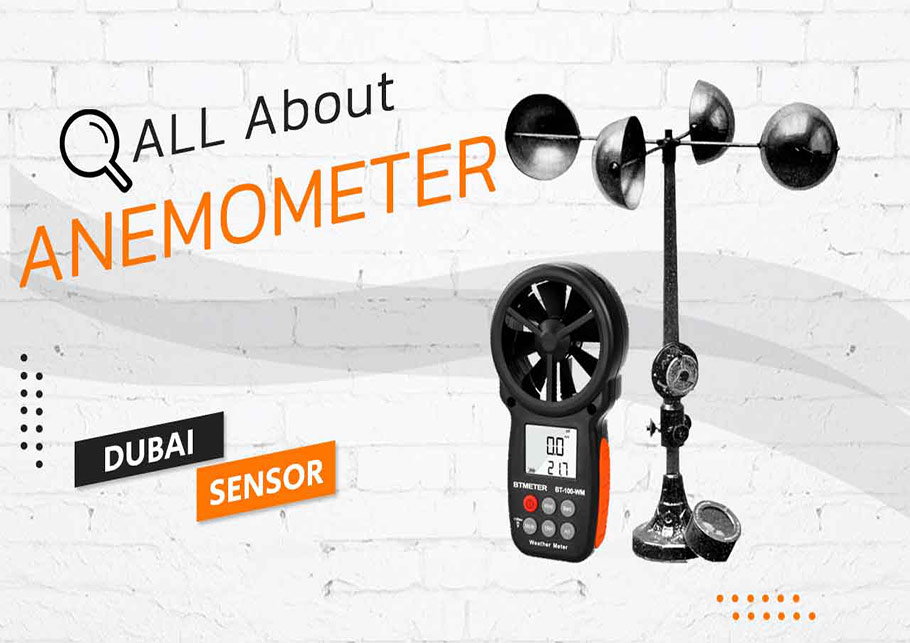Contrasting Digital and Mechanical Anemometers: Which is Right for You?
Contrasting Digital and Mechanical Anemometers: Which is Right for You?
Blog Article
Anemometers Unveiled: Understanding Their Significance in Ecological Surveillance and Precaution
The duty of anemometers in ecological surveillance and safety and security procedures is commonly undervalued, yet their relevance is indisputable. These instruments have a lengthy background rooted in scientific inquiry and technical innovations, advancing to end up being vital tools in various areas. From meteorology to aviation safety and security, anemometers play a critical function in offering accurate data that informs decision-making processes and improves total safety and security. Comprehending the complexities of anemometers unveils a globe of important insights that are basic to our understanding of the atmosphere and the measures we require to guarantee safety.
Background of Anemometers
The development of anemometers can be mapped back to the ancient people where rudimentary wind gauging devices were very first used. These very early wind measurement tools laid the structure for the development of a lot more innovative anemometers in time. Among the earliest well-known anemometers was the hemispherical cup anemometer developed by Leon Battista Alberti in the 15th century. This layout included four hemispherical mugs that accumulated wind energy, offering a dimension of its strength based on the speed of rotation.
In the 18th century, the prominent researcher John Thomas Romney Robinson presented the Robinson anemometer, which featured four hemispherical cups mounted on horizontal arms that prolonged from a main axis. This layout became a criterion in atmospheric dimensions due to its precision and reliability. Over the years, developments in modern technology brought about the development of even more modern anemometers, consisting of ultrasonic anemometers and laser Doppler anemometers, supplying raised precision and performance in determining wind speed and direction. The history of anemometers showcases an exceptional journey of advancement and progress in the field of meteorology.
Types of Anemometers
Throughout the field of weather forecasting, various kinds of anemometers have actually been developed to precisely gauge wind speed and direction. Sonic anemometers make use of ultrasonic signals to measure wind speed and instructions properly. Hot-wire anemometers operate based on the principle that the cooling result of wind on a warmed wire is proportional to the wind speed.
Applications in Weather Forecasting
Having actually discussed the different kinds of anemometers used in weather forecasting for gauging wind rate and instructions, it is essential to explore their useful applications in the field. Anemometers play a crucial role in meteorology by providing accurate and real-time data on wind problems (anemometer). Meteorologists make use of anemometers to monitor wind rate and instructions to anticipate climate patterns, concern cautions for serious weather condition occasions like tornadoes, storms, and storms, and analyze climatic conditions for aviation safety
In weather forecasting, anemometers aid in comprehending regional and regional wind patterns, which are important for predicting climate adjustments and establishing climatic trends. These tools are likewise used in study to research microclimates, urban warmth islands, and air contamination dispersion. In addition, anemometers are utilized in agriculture to maximize crop monitoring methods, such as irrigation and chemical application, based on wind problems.
Significance in Aeronautics Security
An essential facet of guaranteeing aviation security hinges on the careful monitoring of wind conditions making use of anemometers. Anemometers play a vital duty in air travel by providing real-time data on wind rate and direction, assisting pilots in making informed choices throughout take-off, touchdown, and flight. Unforeseeable and solid winds can substantially impact airplane procedures, making it necessary for aviation authorities to depend on exact wind measurements to make sure the safety of travelers and team.

In Visit This Link the dynamic setting of aviation, where also minor modifications in wind rate and direction can have extensive impacts, anemometers stand as essential devices for promoting protected and risk-free air traveling.
Role in Environmental Research Study
Just how do anemometers add to improvements in ecological research? Anemometers play a vital duty in environmental research by supplying essential data on wind rate and instructions. This details is vital for comprehending different climatic procedures, such as air pollution dispersion, weather patterns, and climate change. By accurately determining wind attributes, anemometers aid scientists evaluate the movement of toxins in the air, analyze the impact of industrial emissions, and anticipate the spread of pollutants in the atmosphere.


Conclusion
In final thought, anemometers have actually played an essential duty in ecological monitoring and safety and security procedures. Comprehending the significance of anemometers is crucial for precisely measuring wind rate and direction, which is essential for anticipating climate patterns, making sure safe air travel operations, and carrying out environmental research studies.
One of the earliest known anemometers was the hemispherical mug anemometer invented by Leon Battista Alberti in the 15th century. Over the years, improvements in technology led to the advancement of even more contemporary anemometers, consisting of ultrasonic anemometers and laser Doppler anemometers, offering boosted precision and effectiveness in gauging wind speed and instructions. Hot-wire anemometers run based on the principle that the cooling result of wind on a heated cable is symmetrical to the wind rate. Meteorologists use anemometers to keep an eye on wind speed and direction to anticipate weather condition patterns, concern warnings for serious weather condition click here now occasions like storms, hurricanes, and storms, and assess atmospheric conditions for air travel safety and security.
Recognizing the significance of anemometers is important for precisely determining wind rate and instructions, which is essential for forecasting climate patterns, ensuring safe aviation operations, and conducting environmental research studies. (anemometer)
Report this page